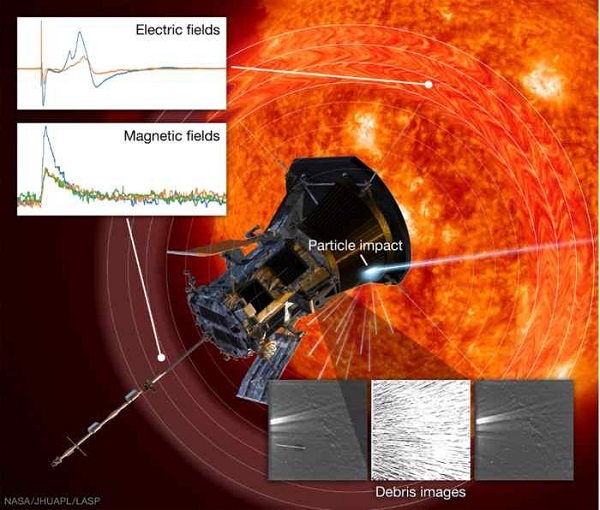
New York, (Samajweekly) NASA’s ambitious Parker Solar Probe spacecraft, studying the Sun at close proximity, is being bombarded with space dust and debris on its way to the Sun, according to a study.
Scientists at the Laboratory for Atmospheric and Space Physics (LASP) at the University of Colorado, Boulder and the Johns Hopkins University Applied Physics Laboratory (APL) have examined collisions between the Parker Solar Probe spacecraft and dust.
Traversing near-sun space at up to 180 kilometres per second, Parker Solar Probe ploughs through the densest region of the zodiacal cloud. The zodiacal cloud is a thick, pancake-shaped dust cloud that extends throughout the solar system and is made up of tiny dust grains shed from asteroids and comets.
As Parker Solar Probe barrels through this region, the study found that thousands of tiny (about 2 to 20 microns in diametre, or less than a quarter of the width of a human hair) dust grains strike the spacecraft at hypervelocity (faster than 6,700 miles per hour).
Upon impact, the material that makes up the dust grains and the spacecraft surface is heated so much that it first vapourises, then ionizes. Ionization is a process where atoms in the vaporised material are separated into their constituent ions and electrons, producing a state of matter called plasma.
The rapid vapourisation and ionization creates a plasma explosion lasting less than one thousandth of a second. The largest of these impacts also generate clouds of debris that slowly expand away from the spacecraft.
The findings could lead to new insights into space weather around the sun as well as have major implications for the safety of future spacecraft.
The team observed how metallic flakes and paint chips knocked loose during collisions with dust drifted and tumbled near the spacecraft. Those pieces of debris created streaks in the images taken by navigational and scientific cameras on Parker Solar Probe.
The study also reported that some debris scattered sunlight into the Parker Solar Probe navigation cameras, temporarily preventing the spacecraft from determining how it was oriented in space. That can be a dangerous prospect for a spacecraft that relies on precise pointing of its heat shield to survive.
Parker Solar Probe was launched in 2018 and has completed nine full orbits of the sun. Before its prime mission ends in 2025, it will complete another 15 orbits.
The results were presented at the 63rd Annual Meeting of the APS Division of Plasma Physics in Pennsylvania.









